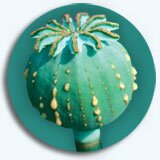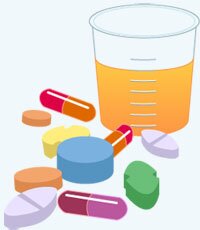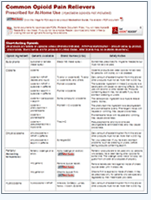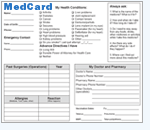Quick Reference
Partners for
Opioid Safety
Opioids911-Safety is
recommended by...

American Academy of
Pain Management
![]()
American Association
for the Treatment of
Opioid Dependence

American Chronic Pain
Association
![]()
American College of
Apothecaries
![]()
American Society for
Pain Management
Nursing
![]()
National Association
of Drug Diversion
Investigators

National Fibromyalgia
& Chronic Pain
Association
![]()
National Fibromyalgia
Association

Reflex Sympathetic
Dystrophy Syndrome
Association

The Foundation for
Peripheral Neuropathy

TNA-The Facial Pain
Association
Certifications
We comply with the
HONcode Standard
for trustworthy health
information.
![]()
Verify Here
WMA Certified

Verify Here
Opioids911-Safety has been independently developed with support provided in part by educational grants from...
Purdue Pharma L.P.
 1. What are opioids?
1. What are opioids?
- Why are opioid medicines prescribed?
- How do opioid medicines work?
- What are the different kinds of opioids?
- What opioids are commonly prescribed?
A. Why are opioid medicines prescribed?
Opioids (oh' pee oyds) have been used for thousands of years in one form or another to help people relieve physical pain. Sometimes these drugs are wrongly called "narcotics." However, "opioids" is the correct term for pain-relieving medicines that come from the opium poppy plant, such as codeine and morphine, and other pain relievers made from chemicals that act like opium.
These are strong medicines, providing relief from moderate to severe pain that often is not helped by other approaches. Opioids are effective for helping to relieve the following three general types of pain:
- Acute Pain - occurs suddenly as a result of an injury, surgery, disease, or other disorder. Acute pain is sometimes sharp or intense, lasting from hours to days or weeks. It usually goes away once the injury is healed or the disease or other disorder gets better.
- Chronic Pain - is ongoing, or persistent, pain that lasts long after an injury or other disorder is expected to be healed. Pain due to cancer is often chronic but, in some cases, the exact cause of chronic pain is not known. Chronic pain may come and go but it is generally any pain lasting longer than 3 to 6 months. Acute pain can become chronic if it is not properly treated and lasts a long time.
- Pain Flares - are sudden increases (flare ups) in pain that may be due to activity (such as dressing, walking, or coughing) or there may not be any known cause. A pain flare comes on quickly without warning and can be quite intense. "Breakthrough pain" is a type of pain flare that overcomes or "breaks through" the daily medicine already being taken to relieve persistent pain. Either type of sudden pain can occur many times during the day and last from minutes to hours. Pain flares and breakthrough pain can be treated with specific opioid medicines to provide quick relief.
B. How do opioid medicines work?
Opioid medicines block pain signals going from your body to your brain, and also within the brain itself. This reduces the feelings of pain and discomfort, which also helps you to rest and sleep. At a proper opioid dose, you can still be alert and feel normal pain, like when you stub a toe. A dose that is too large could make you feel "high" or in a daze, unable to think clearly or perform everyday activities, like dressing, reading, and so forth.
NOTE: Did you know that your body makes its own opioids? One type is called "endorphins." These are naturally released in the body to help decrease minor aches and pains. For greater pains, opioid medicines are effective and safe when used as directed because they work like the body's own endorphins but are much more powerful.
Opioid medicines do not heal an injury or other condition causing pain. The goal of opioid treatment is to ease your pain enough so that you can be more comfortable and live a more active and satisfying life. Becoming completely pain free all day long is usually not possible and should not be expected.
C. What are the different kinds of opioids?
There are many kinds of opioid pain relievers. Three major differences are in (1) how the opioids are made, (2) how they are taken, and (3) how long they act in the body:
-
How opioids are made - two commonly prescribed opioids, codeine and morphine, are made from the opium poppy plant. Other types are made only in part from poppy-plant ingredients (they are semi-synthetic) or entirely from chemicals (they are fully synthetic). Some opioid medicines are stronger than others but, regardless of how they are made, all opioids help to relieve pain in much the same way.
Some people respond better to certain opioids than to others, so it is helpful that there are different kinds. If a particular opioid medicine does not work well for you, your healthcare provider may prescribe a different dose or another product. Always remember that opioid medicines are effective and safe only when used properly according to directions.WARNING: Opioids can do serious harm, even causing death, if they are not used correctly, or if they are taken by adults, children, or pets for whom they are not prescribed. Also, never drink any alcohol (including wine, beer, or hard liquor) while taking opioids.
-
How opioids are taken - opioid products are made in different ways, called "formulations," so they either can be conveniently taken at home or used in special ways by healthcare providers to help manage pain.
 At-Home formulations include tablets, capsules, and liquids taken by mouth (orally) and swallowed whole unless you are told otherwise by your opioid prescriber or pharmacist. There also are tablets, lozenges, and special films that dissolve in the mouth. Opioid patches are applied to the body and the medicine is absorbed into the bloodstream through the skin, so they do not need to be placed where the pain is felt. And, less commonly, certain opioids are inhaled through the nose or inserted into the rectum as suppositories. You should always read and follow the directions for properly using each opioid that you are prescribed.
At-Home formulations include tablets, capsules, and liquids taken by mouth (orally) and swallowed whole unless you are told otherwise by your opioid prescriber or pharmacist. There also are tablets, lozenges, and special films that dissolve in the mouth. Opioid patches are applied to the body and the medicine is absorbed into the bloodstream through the skin, so they do not need to be placed where the pain is felt. And, less commonly, certain opioids are inhaled through the nose or inserted into the rectum as suppositories. You should always read and follow the directions for properly using each opioid that you are prescribed.
 For a table of opioid products prescribed for at-home use <click here>.
For a table of opioid products prescribed for at-home use <click here>.
 CAUTION: Never chew, cut, crush, or dissolve opioid tablets, or open opioid capsules, unless specifically instructed to do so. Opioid patches must never be cut or folded, and they need to stick to the skin completely. Always, remove the old patch before putting on a new one, unless instructed otherwise. If you are prescribed an opioid liquid, ask the pharmacist for a device to accurately measure each dose.
CAUTION: Never chew, cut, crush, or dissolve opioid tablets, or open opioid capsules, unless specifically instructed to do so. Opioid patches must never be cut or folded, and they need to stick to the skin completely. Always, remove the old patch before putting on a new one, unless instructed otherwise. If you are prescribed an opioid liquid, ask the pharmacist for a device to accurately measure each dose.Healthcare Providers have opioid liquid formulations that can be injected by needle into a vein, muscle, or under the skin in special cases. These are generally not used at home by patients or their caregivers. Certain liquid opioids can be put into special pumps by healthcare providers to provide a steady flow of medicine into the body throughout the day.
-
How long opioids act in the body - opioids also differ in how long they provide pain relief. This determines how many times each day the medicine is taken.
Short-acting opioids work for a somewhat brief period of time - generally about 4 hours - and are usually taken every 3 or 4 hours (even at night). These usually work best for acute pain. A newer and special type of short-acting opioids is called fast acting (or "rapid onset"). These are made of an opioid called "fentanyl" and work within minutes to help relieve sudden flares of intense pain that may "break through" the usual pain relief provided by other opioids that the person already is taking. Fast-acting opioids are approved for treating breakthrough pain in patients with cancer and they must be used very carefully according to directions.
Long-acting opioids provide pain relief lasting 8 to 12 hours, so they can be taken only 2 to 3 times during each day (over a 24-hour period). Some, like opioid patches, work very much longer - up to 3 days (72 hours) or even 7 days - and are used less often.
Long-acting opioids are most helpful for chronic pain. Taking these opioids more often or in a greater amount than you are prescribed can lead to overdose and death.WARNING: Some opioids work faster than others and it may take some time to feel pain relief. With certain opioids, pain relief builds over a period of days. Never increase the dose or take the opioid more often on your own, as this can be harmful. Usually, what is needed is more time; NOT more opioid.
Some patients regularly taking a long-acting opioid also may be prescribed a short-acting opioid in case they have brief periods of intense flares or breakthrough pain. This is sometimes called a "rescue medication." It is important that you clearly understand when and how often the short-acting rescue medication may be used - ask your opioid prescriber.
CAUTION: If you are prescribed both a short-acting and a long-acting opioid, it is very important that you not get them mixed up. Product names can be confusing, and accidentally taking a long-acting opioid more often than directed can be very harmful. Ask your pharmacist or opioid prescriber if you have any questions about which opioid medicine is short-acting and which is long-acting.
D. What opioids are commonly prescribed?
All pain-relieving medicines belong to a group of products called "analgesics." Those containing opioids must be prescribed by a properly licensed healthcare provider. Most physicians (MDs or DOs) and dentists may prescribe opioids for pain relief. In many states, nurse practitioners, physician assistants, and certain pharmacists also may prescribe opioid pain relievers.
Opioid analgesics are "controlled substances," meaning that pharmacies and government agencies closely watch prescriptions for them. You should never purchase opioids from a mail order company or Internet source that is not approved by your opioid prescriber, as such products may not be safe or may not contain the correct amount of opioid.
Many opioid analgesics come in both generic and brand-name versions. When opioid products are first introduced they are available only by brand-name. After awhile, the product may be made available as a generic product, which is usually less expensive. This is a copy of the original brand-name medicine and it is the same in terms of its opioid ingredient, strength, dose, effectiveness, and how it is taken.
NOTE: In the United States, by law, a generic version does not look exactly like the brand-name product. The generic may differ in size, shape, color, or in other ways. However, the basic opioid ingredient is still the same. If you are ever confused by this or have questions, ask your pharmacist.

![]() For a table of commonly prescribed generic and brand-name opioid products <click here>.
For a table of commonly prescribed generic and brand-name opioid products <click here>.
When you are given a prescription for an opioid analgesic, be sure to ask what it is called, both the generic name and the brand name (if there is one). Also ask what ingredients it contains, the amount or strength of each ingredient, and how and when the medicine is to be taken. This is important information that can help you to take your opioid medicine safely.
CAUTION: When you pick up your medicine at the pharmacy, make certain the label on the container has correct information. Do the ingredients and dose match what you were prescribed? Mistakes do happen and can be harmful when it comes to opioid medicines.
WARNING: Some short-acting opioid products contain acetaminophen (which may appear as "APAP" on the prescription label). The amount of acetaminophen from ALL products that you take each day must not add up to more than 4,000 milligrams (mg). Check the labels - many over-the-counter pain relievers (sold without prescription), and cough or cold medicines also contain acetaminophen. Taking more than 4,000 mg each day, or using alcohol with products containing acetaminophen, can cause very serious liver damage.
 Finally, it is important that you keep track of all products you are taking. This includes opioid pain relievers, other prescribed medicines, and over-the-counter drugs, vitamins, or supplements (including herbs) available without a prescription.
Finally, it is important that you keep track of all products you are taking. This includes opioid pain relievers, other prescribed medicines, and over-the-counter drugs, vitamins, or supplements (including herbs) available without a prescription.
![]() For a handy chart to keep track of your medicines
For a handy chart to keep track of your medicines
<click here>.
Go to the next section:
2. What are safety concerns with opioids? <click here>.





